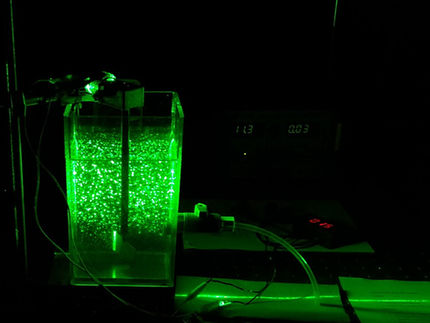Silver nanoparticle concentration too low to be harmful in water supply
Advertisement
silver nanoparticles have a wide array of uses, one of which is to treat drinking water for harmful bacteria and viruses. But do silver nanoparticles also kill off potentially beneficial bacteria or cause other harmful effects to water-based ecosystems? A new paper from a team of University of Missouri College of Engineering researchers says that's not the case.
Doctoral students Chiqian Zhang and Shashikanth Gajaraj and Department Chair and Professor Zhiqiang Hu worked with Ping Li of the South China University of Technology to analyze the results of approximately 300 published works on the subject of silver nanoparticles and wastewater. What they found was while silver nanoparticles can have moderately or even significantly adverse effects in large concentrations, the amount of silver nanoparticles found in our wastewater at present isn't harmful to humans or the ecosystem as a whole.
"If the concentration remains low, it's not a serious problem," Zhang said.
Silver nanoparticles are used in wastewater treatment and found increasingly in everyday products in order to combat bacteria. In terms of wastewater treatment, silver nanoparticles frequently react with sulfides in biosolids, vastly limiting their toxicity.
Zhang said many of the studies looked at high concentrations and added that if, over time, the concentration rose to much higher levels of several milligrams per liter or higher), toxicity could become a problem. But he explained that it would take decades or even longer potentially to get to that point.
"People evaluate the toxicity in a small-scale system," he said. "But with water collection systems, much of the silver nanoparticles become silver sulfide and not be harmful."
Original publication
Other news from the department science

Get the chemical industry in your inbox
By submitting this form you agree that LUMITOS AG will send you the newsletter(s) selected above by email. Your data will not be passed on to third parties. Your data will be stored and processed in accordance with our data protection regulations. LUMITOS may contact you by email for the purpose of advertising or market and opinion surveys. You can revoke your consent at any time without giving reasons to LUMITOS AG, Ernst-Augustin-Str. 2, 12489 Berlin, Germany or by e-mail at revoke@lumitos.com with effect for the future. In addition, each email contains a link to unsubscribe from the corresponding newsletter.

























































